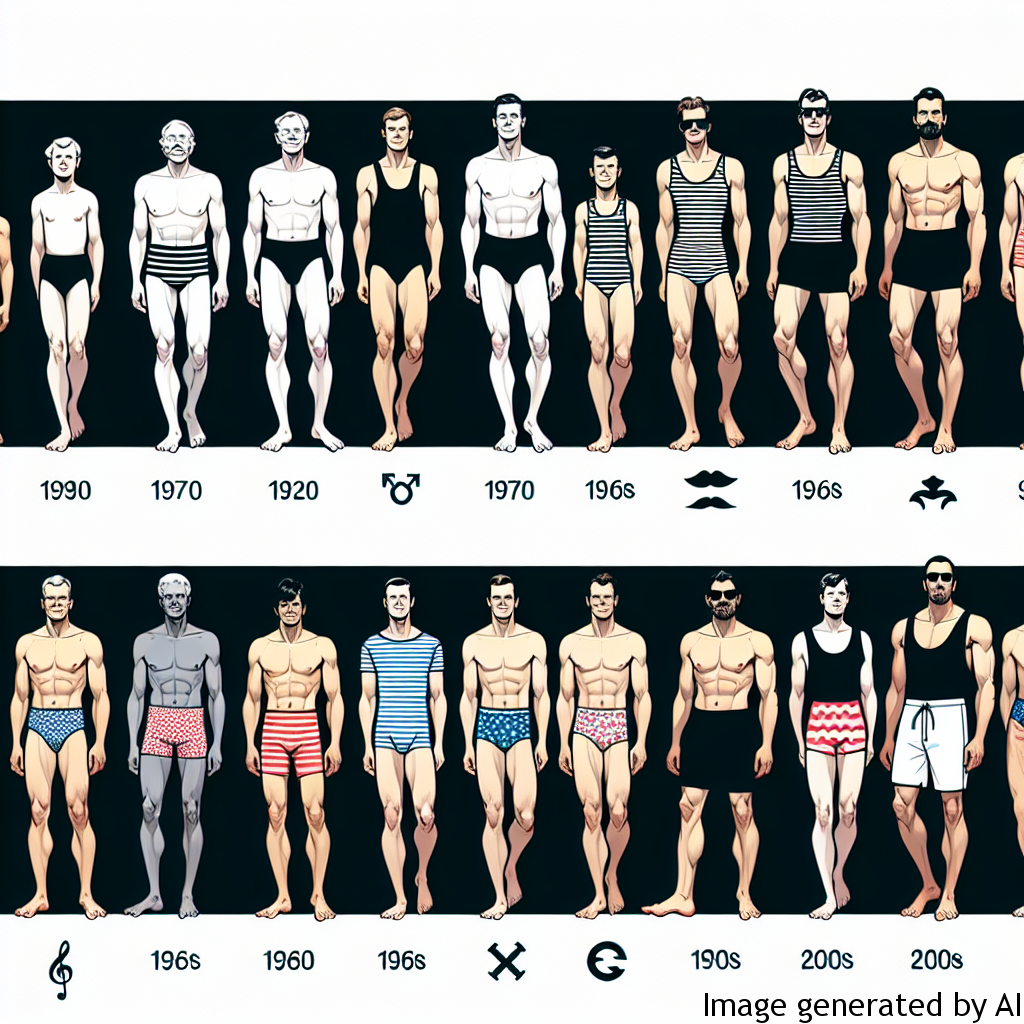Introduction
The evolution of men’s swimwear has been a fascinating journey throughout the centuries. However, the transformation did not solely focus on the transformation of style, but also shifted the sexual lens towards men’s bodies as well. The changes were reasonably indicative and impacted societal expectations on male beauty standards, contributing significantly to men’s psychological health.
Gender Expectations and Their Influence on Men’s Psychological Health
Societal expectations of men’s bodies have undeniably influenced their psychological well-being. The media, entertainment industry, and the fashion world have played massive roles in crafting an image of the “ideal male physique.” Men have been subtly and directly bombarded with visuals that set a high bar for physical attractiveness.
The “Ideal Physique”
Revealing swimwear became more popular attracting attention to men’s physique. The swimsuits of the 20th century, such as speedos or tight trunks, have emphasized the athletic, muscular body which lodged the idea of an ‘ideal physique’ into societal expectations. This created pressure on many men to strive for a near-irrealistic body, thereby causing stress, depression, and eating disorders.
Sexualization and Objectification
Societal norms that pressure men into conforming to a specific physique has led to sexualization and objectification. The more revealing swimwear, the greater the trend became towards sexualizing and objectifying men’s bodies, creating psychological discomfort and contributing to unhealthy body image and self-esteem issues.
Examples of How Gender Roles Can Affect Men’s Lives
Swimwear norms like speedos in Europe and loose trunks in North America are not just fashion statements – they carry gender expectations. Men might face a societal backlash for not conforming, which could lead to feelings of inadequacy and anxiety. Muscular male models in skimpy swimwear advertisements could lead men to believe that they are less attractive if they do not conform to these physique standards, fostering a negative body image leading to recreational drug uses and unhealthy eating habits.
Tips to Improve Psychological Health Considering Gender Roles
Re-thinking the gender norms and breaking free from societal stereotypes is key. Here are a few tips:
- Seek professional help when feelings of inadequacy become overwhelming.
- Practice body positivity and self-love. Your worth is not dictated by your appearance.
- Recognize that people’s bodies are different and what is depicted by media is not always the norm.
- Focus on maintaining a healthy lifestyle, both physically and mentally, rather than aiming for a specific physique.
Conclusion
The evolution of men’s swimwear and its perception have come a long way. However, the sexualized and objectified depiction of men in swimwear has led to increased pressures on men that have a profound impact on their psychological health. It’s essential to dismantle these societal norms and expectations and promote a more inclusive, diverse perception of male attractiveness that supports mental health.

